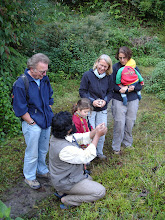
Tourism proposal for Darjeeling Hills
With the apathy of the Government since Independence (where Darjeeling had a major role), the development of the hills fell apart, and even much later entrants like Sikkim performed better because of Government interest. This forced a skill drain from Darjeeling to the newly formed states because of better opportunities from the Governments in those places. The same stands for ‘tourism’ in Darjeeling.
Tourism is always about ‘better places for people to live and visit’. If a local person has to wake up in the morning only to queue up for a bucket of water for the family to wash, how do we expect that the tourists will have a pleasant visit. Several infrastructures, other than Darjeeling and Kalimpong towns were open to visitors which included Tea Estates, Cinchona plantations, Forest Bungalows, etc like Mongpu, Takdah, Pedong, Sonada, etc destinations. In the post Independence period everything was concentrated around Darjeeling and Kalimpong, and mismanagement pushed these destinations to the end. It is only in the nineties, when there was an increase in local empowerment, some destinations emerged with private initiatives.
In today’s changing scenario, the Northeastern states surrounding the Darjeeling Hills, are gaining on their tourism popularity by using the brand name of Darjeeling. Whereas, area wise the Darjeeling Hills have a much bigger population and much less funds for development in comparison to the neighbouring Northeastern states. This exercise is suicidal as Darjeeling Hills needs to be considered in the same pattern of development like the Northeastern states because of its geographical location, terrain and people, or else the rhythm of the development will be disrupted.
We know that the eight Northeastern states have been considered for ‘LTC’ travellers all by air, which amounts to atleast 3 crore travellers from the country from the Government of India offices, PSUs and Undertakings. If Darjeeling Hills are not included in the list, how will the region develop?
Several finance and tax opportunities for tourism projects are being flooded in the Northeastern states through several ministries, including DONER, if Darjeeling is excluded from these facilities, where will the region stand?
Several crore of funds are being spent for the Northeastern states tourism promotion, with several images being from Darjeeling Hills, but none of the promotions mentions the name of Darjeeling which is the brand for the region.
Several crore of Rupees are being spent for infrastructure development of tourism in Northeast, facilities which are also vital for the local inhabitants, with Darjeeling not being included the experience of the tourists is uneven.
The handicrafts and handlooms of the Northeastern states are given heavy financial and skill development boost and also an opportunity to travel to several parts of the country and world at the cost being borne by the Government, why is it not the same for the craftsmen from Darjeeling Hills?
When the first round of Endogenous Tourism projects (village tourism) projects were launched by the Govt of India, Department of Tourism and UNDP, there were two projects for destinations close to Kolkata, but none for the Darjeeling Hills, where it would have been successful.
There should not be a moment wasted in considering the facilities of the Darjeeling Hills at par with the Northeastern states to actually value the rhythm of development in the region.
Raj Basu, 9733000444, actraj@gmail.com.

